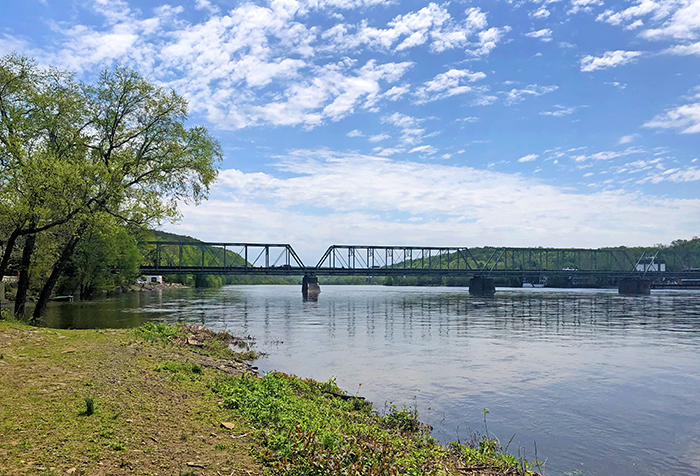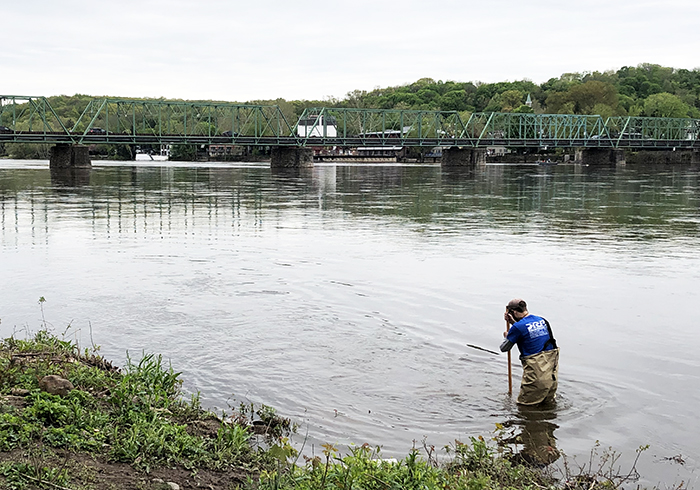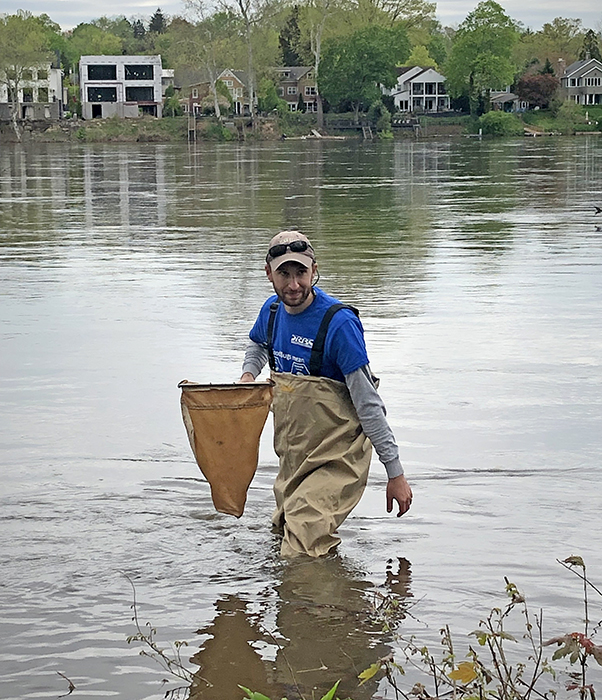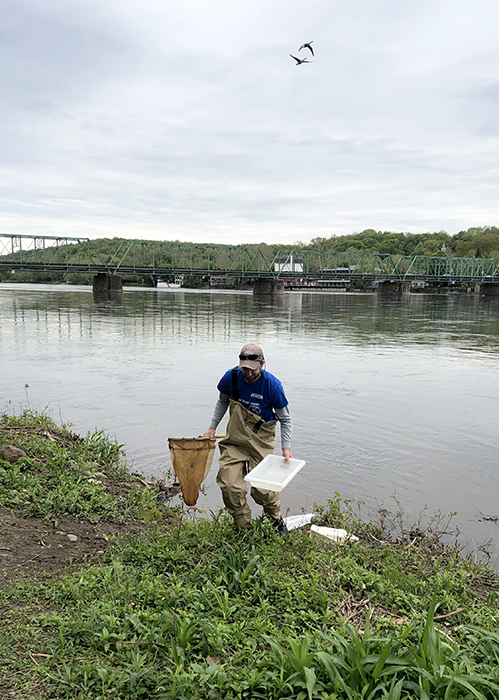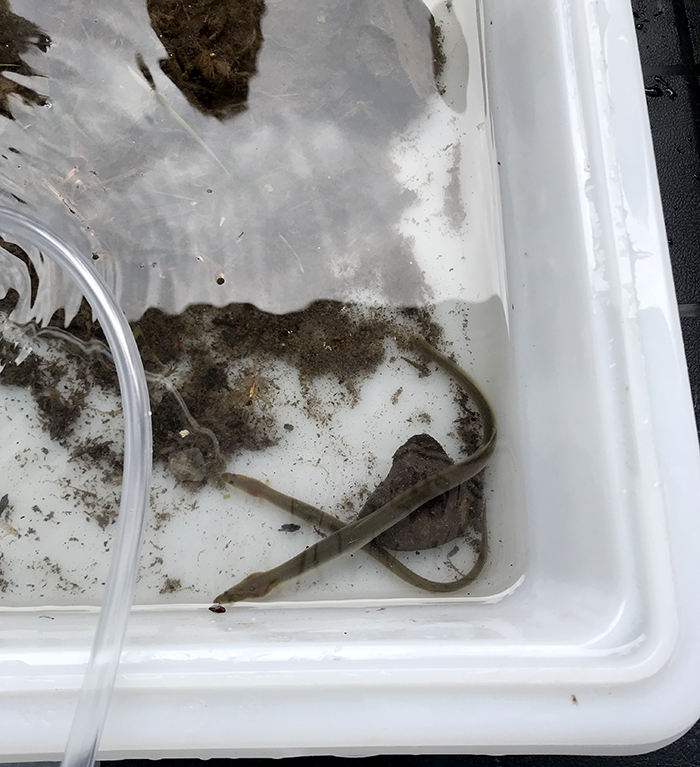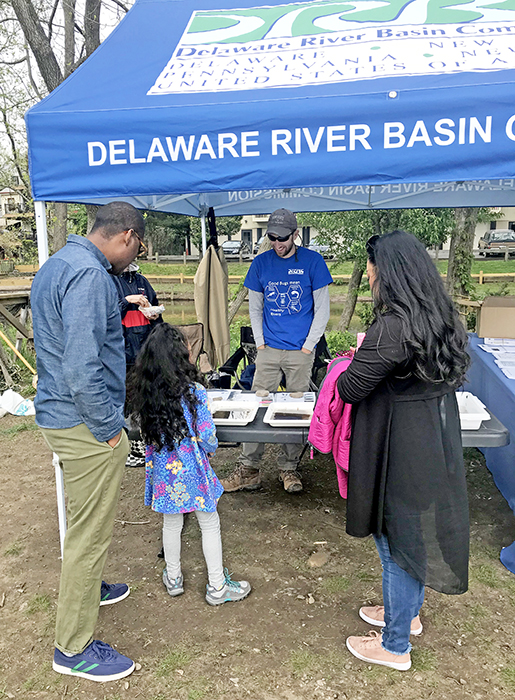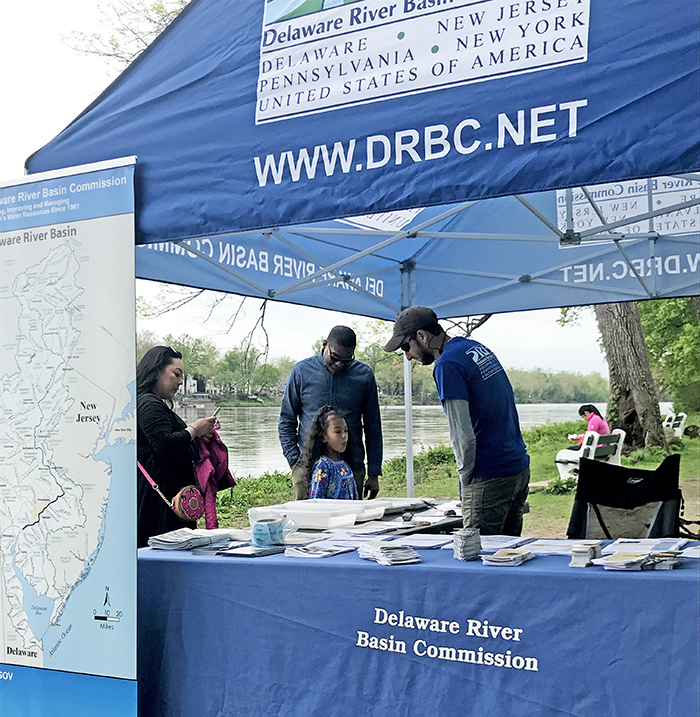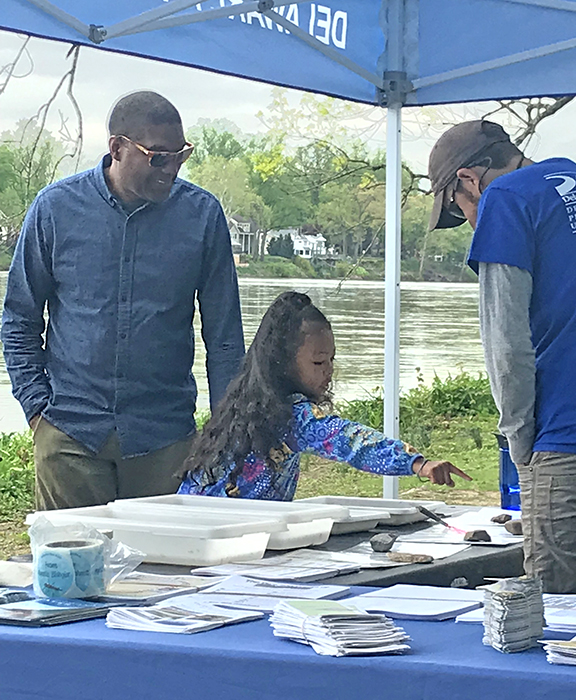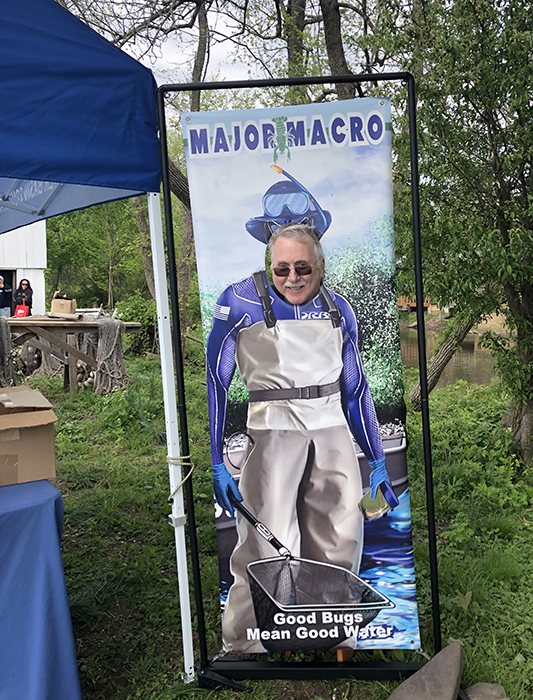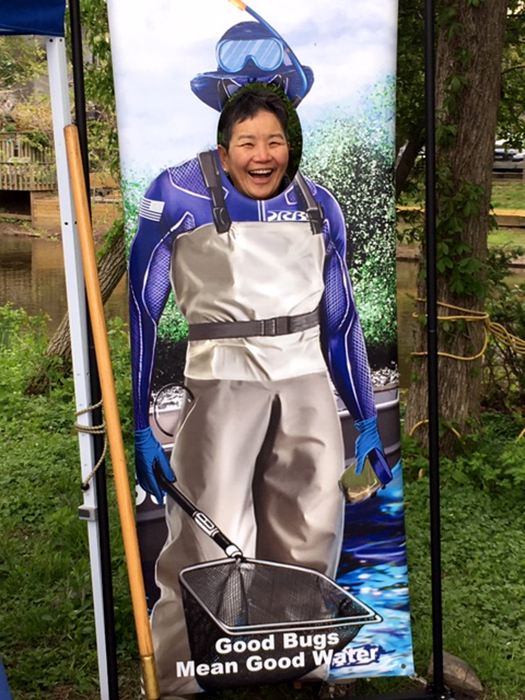Delaware • New Jersey • Pennsylvania
New York • United States of America
DRBC staff enjoy and appreciate the opportunity to get out in the field and interact with the public. Last month during Earth Week, DRBC staff shared their expertise at Temple University Ambler’s EarthFest, a free, annual outdoor celebration geared for kids of all ages showcasing hands-on learning activities.
Over the years, DRBC has been a frequent EarthFest exhibitor and was proud to again participate this year, using its Enviroscape Model to teach about different sources of water pollution. The model is always a hit with students, as it demonstrates in a visually engaging way the connection between land and water and what we all can do to help keep our waterways clean.
Hosted by Temple University Ambler, EarthFest is held on Ambler's campus and celebrates Earth Day by promoting environmental awareness and protection using sustainable concepts, methods, and practices. This year’s EarthFest was unfortunately cut short due to thunder and lightning storms; while the event is rain or shine, safety for the students and exhibitors comes first. Here's to hoping next year's weather will cooperate!
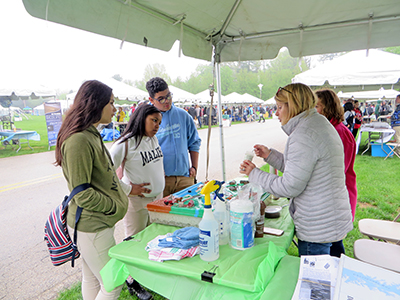 |
 |
DRBC's Donna Woolf (left) and Kate Schmidt talk to student groups about how pollutants, such as
trash, fertilizer, and animal waste, can get into our rivers and streams when it rains. Photos by DRBC.
The Delaware River's full of aquatic bugs and scientists are very interested in collecting them. DRBC staff explained why and answered other questions about the river at the 38th Annual Lambertville Shad Festival, held last month.
DRBC's exhibit was set up on Lewis Island, where commission staff collected macroinvertebrates (aquatic bugs) from the Delaware River and displayed them in trays of water. Using identification keys and with the help of DRBC staff, kids and adults alike were able to identify the bugs found in the water samples. The hands-on lesson explained that the type and amount of bugs found in a waterway can help tell how healthy the river is. Some bugs, for example mayfly, damselfly, or caddisfly larva, are very sensitive to pollution; others, such as leeches or aquatic worms, are more pollution tolerant. Finding more pollution sensitive species in the water samples, which we did at Shad Fest, is a positive indicator of the health of the Delaware River off of Lewis Island. We even collected two juvenile American eels!
In addition to teaching how bugs can indicate the river’s water quality, DRBC staff talked with festival attendees about the commission and its programs and about the Delaware River and its watershed. Lewis Island is also where the Lewis Fishery, the last commercial shad fishery in New Jersey on the Delaware River, offered a demonstration on how they seine (catch with nets) for American shad. They fish for shad all season long; you can view their 2019 Delaware River shad fishing reports and others compiled by N.J. by clicking here.
The Shad Festival celebrates the region's arts community, the Delaware River, and of course, the annual return of the American shad! The Delaware River is an important waterway for American shad, and their presence is indicative of the water quality improvements that have occurred over time. For decades during the 1900s, pollution robbed the lower Delaware River of the oxygen needed for shad and other fish to breathe. The number of American shad in the Delaware increased dramatically by the late 1980s and early 1990s due in large part to pollution control programs conducted by the Delaware River Basin Commission (DRBC) and other environmental agencies. Learn more about American shad.
High winds prevented us from displaying on Saturday, but we had a great day on Sunday. We thank Steve Meserve and the Lewis Fishery Crew for again allowing us to display on Lewis Island with them!
Copyright © Delaware River Basin Commission,
P.O. Box 7360, West Trenton, NJ 08628-0360
Phone (609)883-9500; Fax (609)883-9522
Thanks to NJ for hosting the DRBC website

